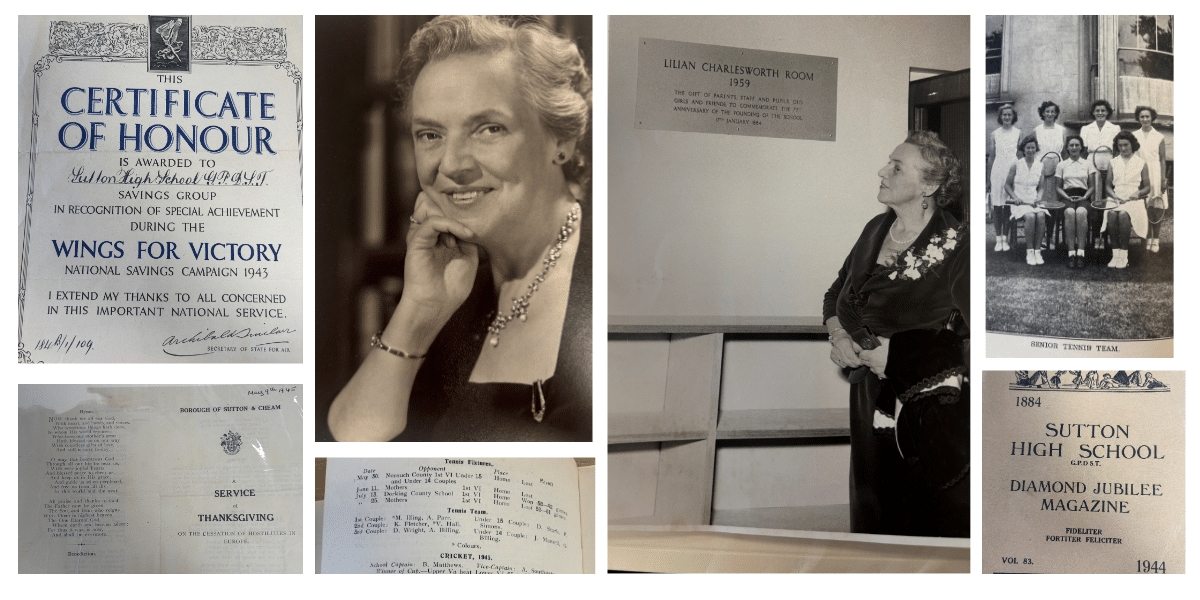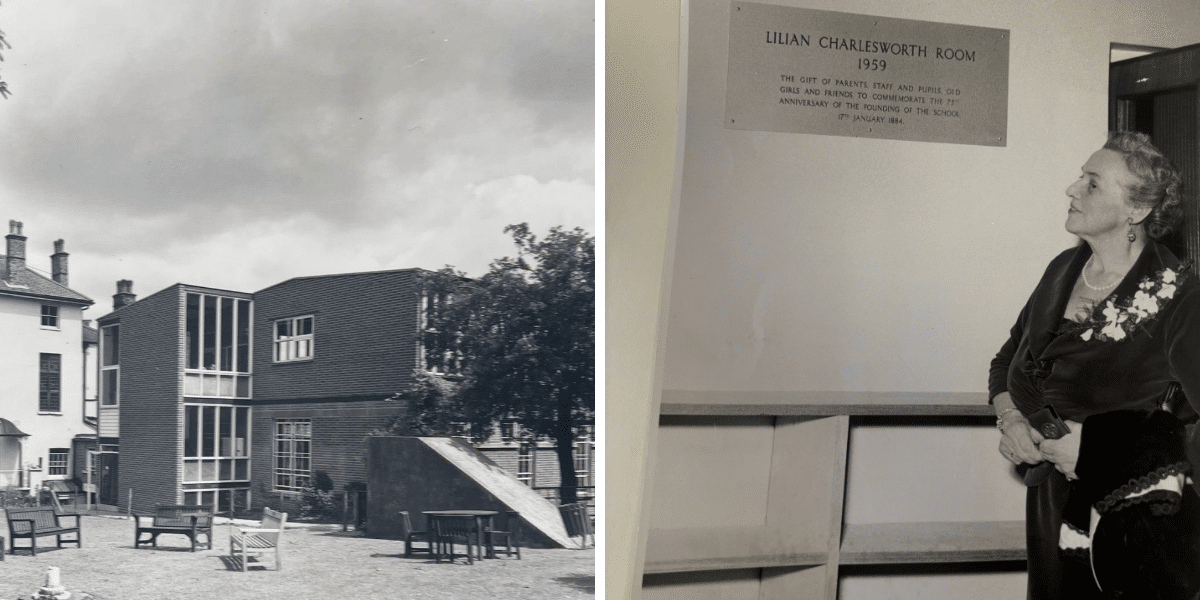Pictured above is former Sutton High headmistress, Miss Charlesworth, who took up her role as headmistress of Sutton High School in September 1939, the same time that WWII started.
As we mark the 80th anniversary of VE day, Sutton High School’s former Head of History and school archivist, Sue James, takes a look back at how VE day has shaped Sutton High School.
There was an air of anticipation in the country in May 1945 as the war in Europe was coming to an end. Hitler had committed suicide and war-time restrictions, apart from rationing, were being lifted. So, it was no surprise that at 3 pm on the 7th May a news broadcast on the wireless (radio) announced that Germany had officially surrendered.
The staff at school came out on to the balcony, which was outside what is now Mrs Dawson’s room, to tell the students that the war was over. The sixth form were sitting on the grass by the library and heard the news first. One records that she did not spend a long time celebrating as revision for the Higher School Certificate got in the way! Another said she could not concentrate on anything afterwards.
The news broadcast also included an announcement of a public holiday the next day which was to be known as Victory in Europe Day. In fact, the school had two days holiday. One former student, no doubt typical of many others, went up to London to celebrate and her description of the atmosphere as “electric” shows the strength of feeling as crowds stood outside Buckingham Palace to cheer the King, Queen and Churchill.
Others stayed locally and attended celebratory events such as firework displays (one optimist mentioned that her family had saved up fireworks since 1939 ready for this occasion) and services of thanksgiving.
Special tribute should be paid to the headmistress, Miss Charlesworth, as she had taken up her role as headmistress in September 1939, the same time that the war started. All her plans had to be put to one side as she spent the first few months organising a series of air-raid shelters in the school grounds so that students could stay all day but also persuading parents to leave their children in school. Sutton was a neutral area which meant that children did not have to be evacuated but many parents were scared to stay near London and Croydon Airport and evacuated their families to safer places abroad or in counties far away from London.
In fact, Miss Charlesworth was very successful at keeping numbers high; the only time that the roll fell to the small number of 70 students was during the so-called Doodlebug Summer of 1944, when V1 flying bombs and V2 rockets rained down on the Home Counties. V.E. Day brought to an end six years of many challenges. These included providing school lunches in a time of rationing, fire-watching at night, raising money for war charities, evacuating pupils to other Trust schools in the summer of 1944 and taking older students to pick potatoes in Lincolnshire as part of the war-effort.
These activities were additional to keeping up standards in all areas of the curriculum and providing the usual extra-curricular activities in drama, sport and music. Students had to write their public examinations in air-raid shelters, leaning on wooden boards, with candles for light. The school magazine attests to the fact that only two students missed a public examination under these conditions.
Amazingly, Sutton High remained unscathed from the bombing apart from broken windows caused by nearby blasts. However, living with the privations and tragedies of war had a psychological impact which can be seen in fleeting references to life-long claustrophobia caused by spending hours in the shelters and fear of leaving home to go to school in case the house was bombed when they were away. Miss Charlesworth referenced the difficulties for her students who had fathers away from home for years in the armed forces only to find the family dynamics changing when they came home. Peace brought its own problems.
Yet, the archives show a widespread feeling of praise for Miss Charlesworth’s leadership apart from niggles such as when she cancelled an inter-school match due to the threat of bombing! One student summarised the feelings of gratitude towards her; “Miss Charlesworth, words fail me, I thought she was The Best…an awesome and reassuring figure.”
Miss Charlesworth went on to become a promoter of international understanding as a delegate to U.N.E.S.C.O. and through her time as chair of the Council for Education in World Citizenship. When she received a C.B.E. for her efforts in 1954, she said that it was the school who really earned that honour for her. She retired as headmistress in 1959 and the Charlesworth room, originally a base for the sixth form, was built in her honour.


